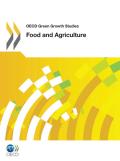Green jobs in Mauritius stands at around 6.3 per cent of total employment (35,160 jobs out of a total of 558,100). This policy brief provides a summary of the assessment of existing green jobs in Mauritius undertaken in 2010. It concludes with providing a short term projection of a green growth scenario as opposed to a conventional one. The assessment originated from a request by the Government of Mauritius and was conducted by the ILO and a research team in Mauritius in 2011/2012. Its aim is to inform the Ministry of Labour as a contribution to shaping the Maurice Ile Durable (MID) strategy launched in 2008, which intends to make Mauritius a model country of sustainable development.
This report addresses two of the defining challenges of the twenty-first century: achieving environmental sustainability and turning the vision of decent work for all into a reality. It shows that not only are both challenges urgent, but they are also intimately linked and will have to be addressed together. While it is certain that environmental degradation and climate change will increasingly require enterprises and labour markets to react and adjust, the goal of environmentally sustainable economies will not be attained without the active contribution of the world of work.
The European Commission and the International Labour Organization have combined efforts in reaction to the deep crisis that hit the global economy in 2008. The aim of this joint project is to examine policies that will lead not only to a quicker recovery but also to a more sustainable, environmentally friendly and equitable global economy. 'Towards a Greener Economy: The Social Dimensions' aims to promote a clearer understanding of the nature of the green economy and its implications for labour markets, especially the reallocation of jobs from high- to low-polluting sectors.
This report - which contains case studies of Melbourne, Vancouver, Paris, Toyama and Portland - offers a comprehensive understanding of the compact city concept, its role in today’s urban contexts, and the potential outcomes of compact city policies. It examines compact city policies across the OECD in relation to green growth objectives and the role of indicators in tracking policy performance. The report proposes compact city strategies and ideas for achieving better outcomes and highlights governance challenges for implementing practical compact city strategies. Importantly, it highlights how urban spatial policies can help foster economic growth and development while preventing environmental degradation and climate change. The report thus addresses a central concern of the OECD Green Growth Strategy, and provides an important contribution to it.

